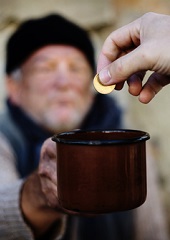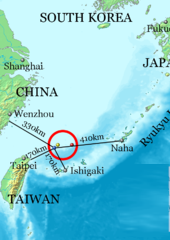America’s 50-Year War on Poverty
Key figures on poverty in the United States, five decades after President Johnson launched his “war.”
January 10, 2014

1. The poverty rate varies dramatically by race. The poverty rate for black Americans was the highest — at 27.2% — of the four major racial groups tracked by the U.S. Census Bureau.
2. That was nearly double the official poverty rate of 15% for the nation as a whole.
3. The 10.9 million blacks in poverty accounted for almost a quarter of the 46.5 million Americans living in poverty in 2012.
4. The poverty rate for white Americans, at 9.7%, was about three times lower than for black Americans.
5. However, because white Americans constitute such a large percentage of the overall population, they constitute the largest number of Americans living in poverty — 18.9 million.
6. The poverty rate for Hispanic Americans was, at 25.6%, nearly as high as for black Americans.
7. Hispanics comprise the second-largest ethnic group in the United States, and they are also the second-largest group of Americans living in poverty — at 13.6 million.
8. Asian Americans are the smallest of the four major U.S. racial groups. In 2012, the poverty rate for this group was 11.7%.
9. This means that 1.9 million Asian Americans were living in poverty last year, or about 4% of all Americans in poverty.
10. Poverty rates also vary along regional lines. The poverty rate is highest in the South, where 16.5% of people were poor in 2012. This compares to 13.3% in the Midwest, 13.6% in the Northeast, and 15.1% in the West.
11. In 2012, 21.8% of all Americans under the age of 18 were poor, compared to 13.7% of those aged 18 to 64. The poverty rate was lowest among Americans 65 and older — at 9.1%.
12. Spending by the federal government on the major means-tested programs for low-income Americans — including Medicaid, the Earned Income Tax Credit, Supplemental Security Income, Temporary Assistance for Needy Families, and the Supplemental Nutrition Assistance Program (food stamps) — amounted to $588 billion in 2012.
13. That was $82.5 billion less than the $670.5 budget for defense-related expenditures.
14. While the U.S. government has invested significant sums of money to reduce poverty or to provide the resources that keep many millions from falling into poverty, it is clear that a key weapon in the War on Poverty is job creation.
15. The poverty rate for full-time workers in 2012 was just 3%, while for part-time workers it was 16% — and for those who had no job, it was 33%.
Editor’s note: With a few exceptions, the data in this feature are from the U.S. Census Bureau. They can be found here, in Table 3. People in Poverty by Selected Characteristics: 2011 and 2012.
Takeaways
White Americans are the greatest number of poor Americans (18.9m), but blacks have the highest poverty rate (27.2%).
The poverty rate for Hispanic Americans is 25.6%, nearly as high as for black Americans.
US poverty rates vary along regional lines. The poverty rate is highest in the South, at 16.5% in 2012.
The US poverty rate for full-time workers is 3%, while for part-time workers it’s 16%. For the jobless, it’s 33%.
Author
The Globalist
Read previous

Japan Must Own Up to Past Actions
January 10, 2014